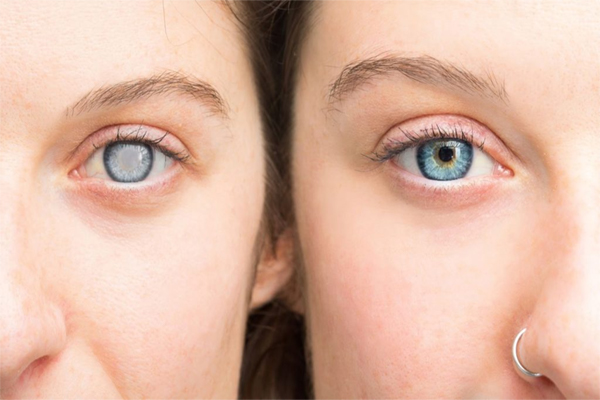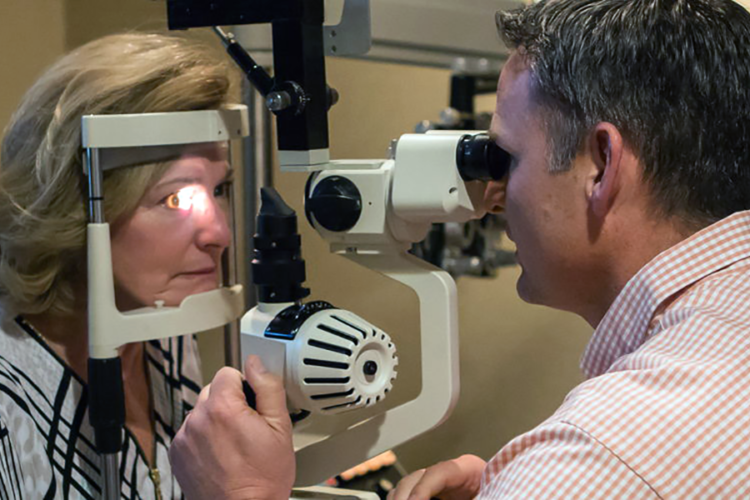Cataracts are a common eye condition that affects millions of people worldwide. It is characterized by the clouding of the lens in the eye, leading to vision loss and blindness if left untreated. Modesto cataract surgery helps remove the diseased eye lens and replace it with an artificial lens to restore your vision.
While cataracts are a natural part of aging, there are several causes and risk factors that can increase the likelihood of developing cataracts. In this article, we will discuss the causes of cataracts, and what you can do to prevent or delay their onset.

What causes cataracts?
Here is a comprehensive guide to the causes of cataracts:
Family history
- Family history can play a role in the development of cataracts. Some people may be born with cataracts or develop them at an early age due to inherited genetic mutations. A family history of cataracts can increase a person’s risk of developing cataracts.
Aging
- Aging is the most significant risk factor for cataracts. As we age, the lens in our eye becomes less flexible and more prone to clouding.
- Over time, the lens can become cloudy and opaque, leading to vision loss.
- While cataracts can occur at any age, they are most commonly seen in people over the age of 60.
Protein changes
- Cataracts are caused by changes in the protein structure of the lens. The lens is made up of water and protein fibers that are arranged in a specific way to allow light to pass through.
- As we age, the protein fibers can become damaged or denatured, leading to the formation of cloudy areas in the lens. These cloudy areas can scatter light and reduce vision.
Oxidative stress
- Oxidative stress is a condition where the body produces more free radicals than it can neutralize.
- Free radicals are unstable molecules that can damage cells and tissues, including the lens of the eye.
- Oxidative stress can contribute to the formation of cataracts by damaging the protein fibers in the lens.
Diabetes
- Diabetes is a significant risk factor for cataracts. High blood sugar levels can damage the blood vessels in the eye, leading to the formation of cataracts.
- People with diabetes are also at risk of developing cataracts at an earlier age than those without diabetes.
Smoking
- Smoking is a significant risk factor for cataracts. Smoking can damage the lens and increase the risk of cataract formation. Smoking can also increase the risk of other eye diseases, such as age-related macular degeneration.
Eye injuries
- Eye injuries can increase the risk of cataract formation. A blow to the eye or a penetrating eye injury can cause the lens to become cloudy and lead to cataract formation.
Medications
- Certain medications can increase the risk of cataract formation.
- Steroids, such as prednisone, can increase the risk of cataracts. Other medications, such as certain antidepressants and antihistamines, can also increase the risk of cataracts.
Nutritional deficiencies
- Nutritional deficiencies can increase the risk of cataract formation.
- A diet that is deficient in antioxidants, such as vitamins C and E, can increase the risk of cataracts.
- A diet that is high in processed foods and sugar can also increase the risk of cataracts.
Can you prevent cataracts?
While cataracts are a natural part of aging, there are several steps you can take to prevent or delay their onset. These include:
- Eating a healthy diet that is rich in fruits and vegetables
- Wearing sunglasses to protect the eyes from ultraviolet radiation
- Quitting smoking
- Maintaining a healthy weight
- Managing chronic diseases, such as diabetes and high blood pressure
- Getting regular eye exams
Cataracts are a common eye condition that can cause vision loss and blindness if left untreated. While aging is the most significant risk factor for cataracts, there are several other causes that can increase the likelihood of developing cataracts. By understanding the causes of cataracts, you can take steps to prevent or delay their onset.


